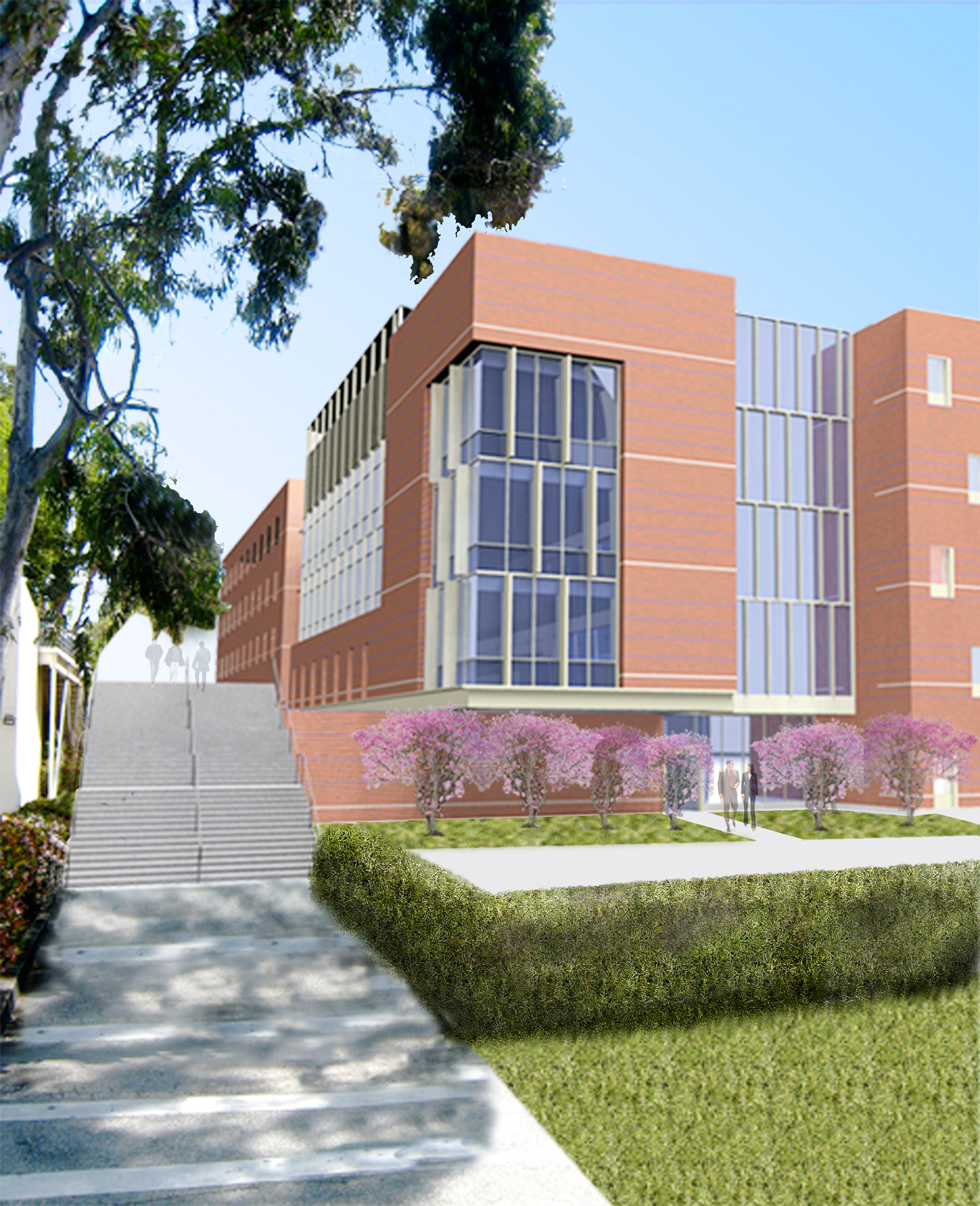By spring 2014, engineering students and researchers will have a new home to study advanced energy conservation technologies for microelectronics and nanotechnology at UCLA.
On Sept. 29, UCLA’s Henry Samueli School of Engineering and Applied Science received about $6 million from the U.S. Commerce Department’s National Institute of Standards and Technology to construct the Western Institute of Nanotechnology on Green Engineering and Metrology, according to a UCLA statement.
The future green building, with 35,000 square feet of laboratory space on four floors, will be located in the current Engineering 1 building, which is expected to be demolished next summer.
Construction on the green engineering building will begin immediately after the demolition, said Jane Chang, associate dean of research and physical resources at the School of Engineering.
Although there are multiple engineering buildings at UCLA, the new building will provide additional space to conduct research, educate students and hold pieces of equipment unique to nanotechnology and microelectronics, said Kosmas Galatsis, the chief operating officer of the Western Institute of Electronics and the Center on Functional Engineered Nano Architectonics at UCLA.
In addition, the new institute will foster greater productivity and creativity, said Kang Wang, professor of electrical engineering and director of the Western Institute of Electronics and the Center on Functional Engineered Nano Architectonics at UCLA.
Currently, both the Western Institute of Nanotechnology and Center on Functional Engineered Nano Architectonics are located in Boelter Hall.
“We are sort of scattered around this campus. With this new building, we can consolidate green technology and engineering in one building, so there will be more interaction between the engineers and scientists,” he said.
UCLA is among four other institutions that were granted funds for constructing new science facilities, according to the U.S. Commerce Department’s website.
While the federal government is granting UCLA $6 million, approximately $24 million more will be needed to finish the project. The campus and School of Engineering are working on finding additional funds from various sources, Chang said.
According to the U.S. Commerce Department’s website, the school’s research proposal was evaluated based on a number of factors, including financial need and the scientific and technical merit of the proposed facility.
“We demonstrated there was a need to have this space that will have a national impact,” Chang said. “In the time when the state has a very tight budget, we wouldn’t otherwise have adequate space for our faculty to conduct research.”
The building will house the Western Institute of Nanotechnology, the Center on Functional Engineered Nano Architectonics and the Energy Frontier Research Center on Molecularly Engineered Energy Materials, all of which will research engineering and technology that will facilitate green engineering and metrology.
“The scope of the research is cutting-edge solutions for now, and 10 and 15 years, in terms of how we can be more energy efficient in everything we do, in terms of materials and technology,” Chang said.
With the construction, Chang said current engineering researchers will be relocated, but the campus central administration and engineering school are working to set up staging spaces for research to continue within the engineering school.
“There is always going to be inconvenience,” she said. “But if that is the reason we don’t build anything new, we will miss out on great opportunities.”
